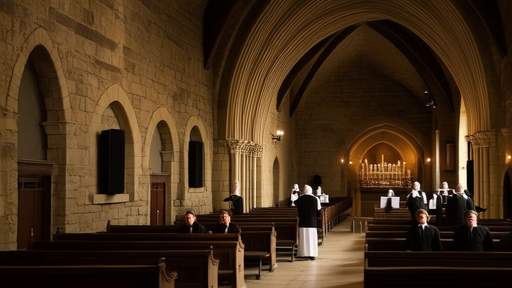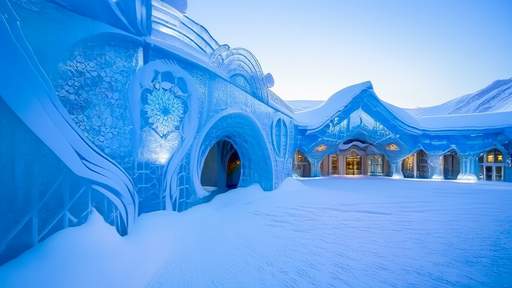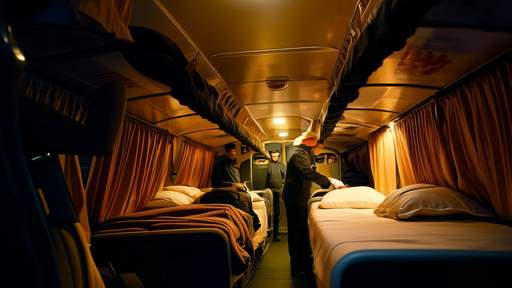The Norwegian lighthouse hotel stands as a solitary sentinel against the rugged coastline, its foghorn echoing across the misty fjords at precise intervals. This rhythmic call, both haunting and reassuring, has become synonymous with the hotel’s identity, drawing travelers from around the world to experience its unique charm. The foghorn’s cadence is not merely a functional necessity but a carefully curated element of the guest experience, blending history, technology, and artistry into something unforgettable.
Perched on the edge of a windswept cliff, the hotel’s origins date back to the late 19th century when it served as a vital navigational aid for ships braving the treacherous Nordic waters. Over time, the lighthouse was decommissioned, but rather than fading into obscurity, it was transformed into a boutique hotel that pays homage to its maritime heritage. The foghorn, once a lifeline for sailors, now serves a different purpose—setting the tone for an immersive stay where the past and present intertwine.
The sound of the foghorn is anything but arbitrary. Engineers and historians collaborated to preserve its original tone and timing, ensuring that each blast carries the same weight and resonance as it did a century ago. The interval between blasts—precisely 45 seconds—was chosen after studying archival records and consulting with retired lighthouse keepers. This attention to detail transforms what could have been a mere novelty into a living artifact, a sonic bridge between eras.
Guests often describe their first encounter with the foghorn as a moment of sublime disorientation. The sound cuts through the silence of the fjords, a deep, vibrating note that seems to emanate from the very rocks beneath the hotel. Some find it meditative, others exhilarating, but few remain indifferent. The hotel has even curated a series of "Foghorn Experiences," including guided walks along the cliffs at dusk, when the interplay of sound, light, and landscape is at its most dramatic.
Behind the scenes, maintaining the foghorn is a labor of love. A dedicated team of technicians oversees its operation, performing regular maintenance to ensure reliability without sacrificing authenticity. The mechanism itself is a hybrid of old and new—vintage brass fittings paired with modern acoustic enhancements to protect the structural integrity of the historic building. This delicate balance reflects the hotel’s broader philosophy: honoring tradition while embracing innovation.
The foghorn’s influence extends beyond the hotel grounds. Local artists have incorporated its sound into musical compositions, and filmmakers have used it as a backdrop for scenes of stark Nordic beauty. Even the surrounding wildlife seems to have adapted to its rhythm; seabirds often take flight in the pause between blasts, as if choreographed by some unseen conductor. It’s a reminder that the hotel is not an isolated entity but part of a larger ecosystem, both cultural and natural.
For those who stay overnight, the foghorn becomes a lullaby of sorts. The management offers earplugs for light sleepers, but many guests choose to let the sound wash over them, its regularity providing a strange comfort. There’s something profoundly human about this response—a primal recognition of a signal that means safety, a beacon in the literal and metaphorical dark. In a world increasingly dominated by digital noise, the foghorn’s analog persistence feels like a rebellion.
As climate change alters weather patterns along the coast, the foghorn’s role has subtly shifted. Foggy days, once a near-constant feature of the region, are becoming less frequent. Some worry that the hotel’s defining characteristic may one day fade into silence, preserved only in recordings and memories. In response, the staff has begun documenting the foghorn’s soundscapes, creating an archive that captures its essence for future generations. It’s a poignant acknowledgment that even the most enduring traditions are not immune to time.
The Norwegian lighthouse hotel and its foghorn stand as testaments to the power of place and sound. They remind us that certain experiences defy easy categorization—part utility, part art, part history. To hear the foghorn is to hear the echo of countless stories: of sailors navigating by ear, of keepers tending their posts through storms, of travelers seeking something beyond the ordinary. In those 45-second intervals, an entire world unfolds.

By /Jun 5, 2025

By /Jun 5, 2025

By /Jun 5, 2025

By /Jun 5, 2025

By /Jun 5, 2025

By /Jun 5, 2025

By /Jun 5, 2025

By /Jun 5, 2025

By /Jun 5, 2025

By /Jun 5, 2025

By /Jun 5, 2025

By /Jun 5, 2025

By /Jun 5, 2025

By /Jun 5, 2025

By /Jun 5, 2025

By /Jun 5, 2025

By /Jun 5, 2025

By /Jun 5, 2025

By /Jun 5, 2025

By /Jun 5, 2025